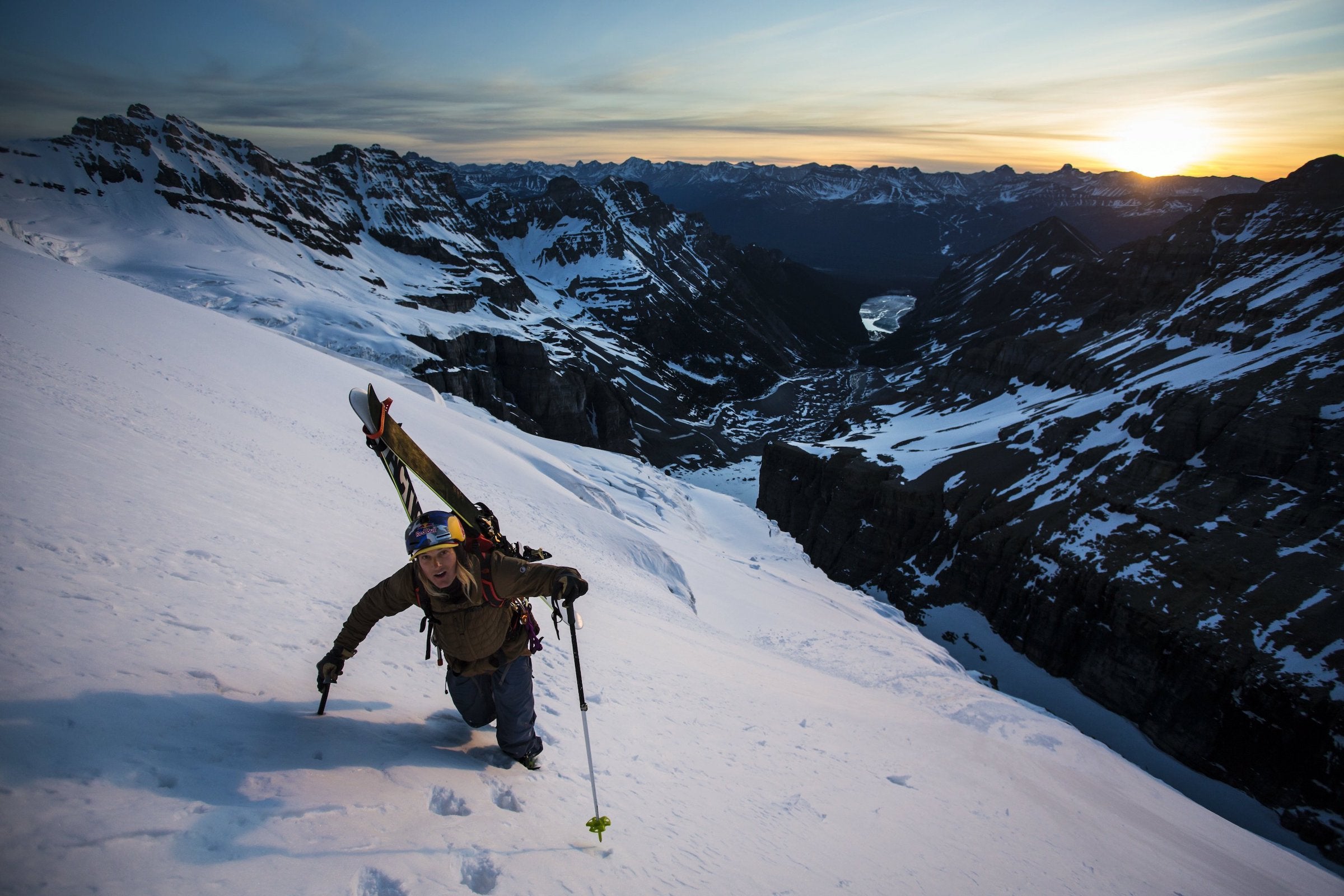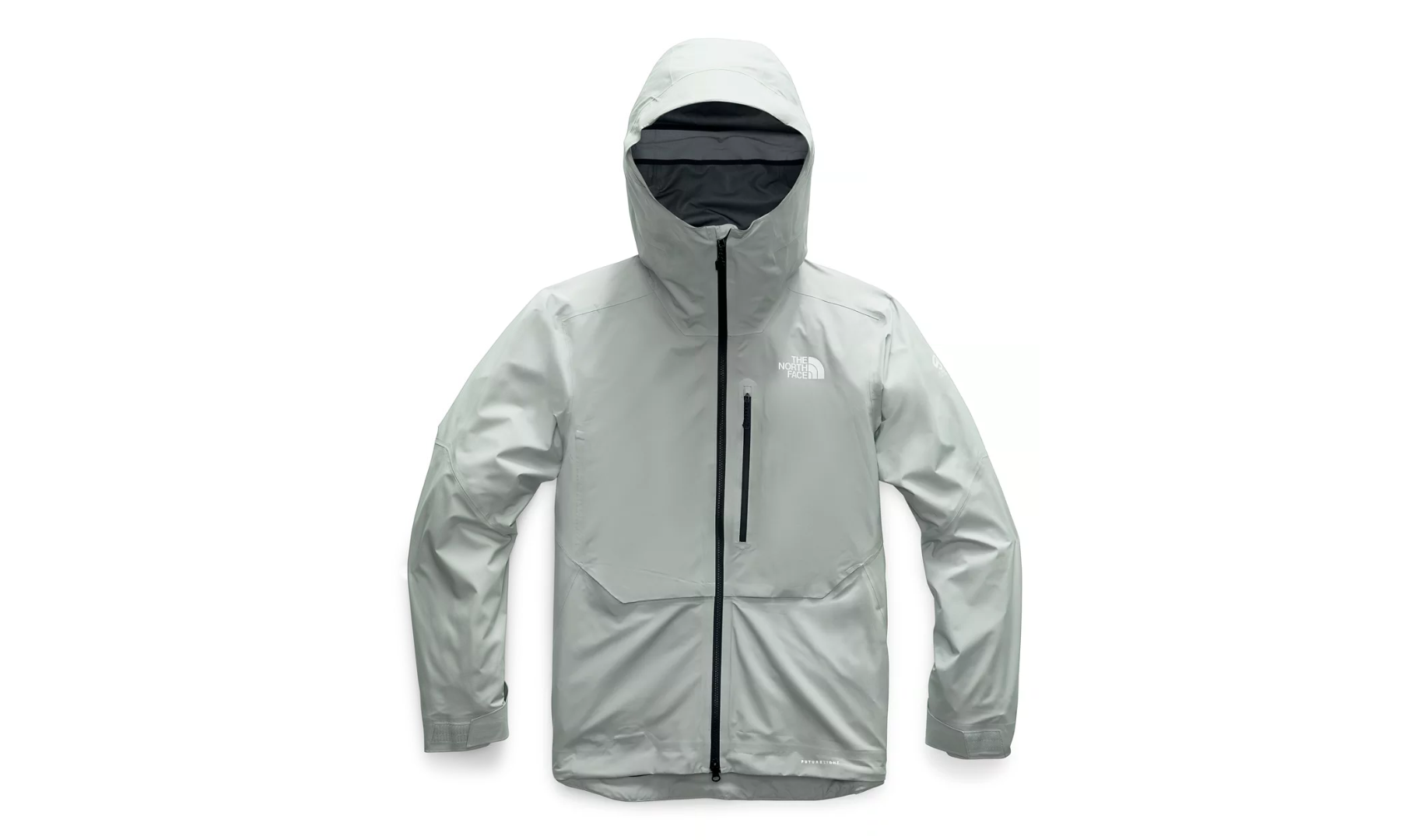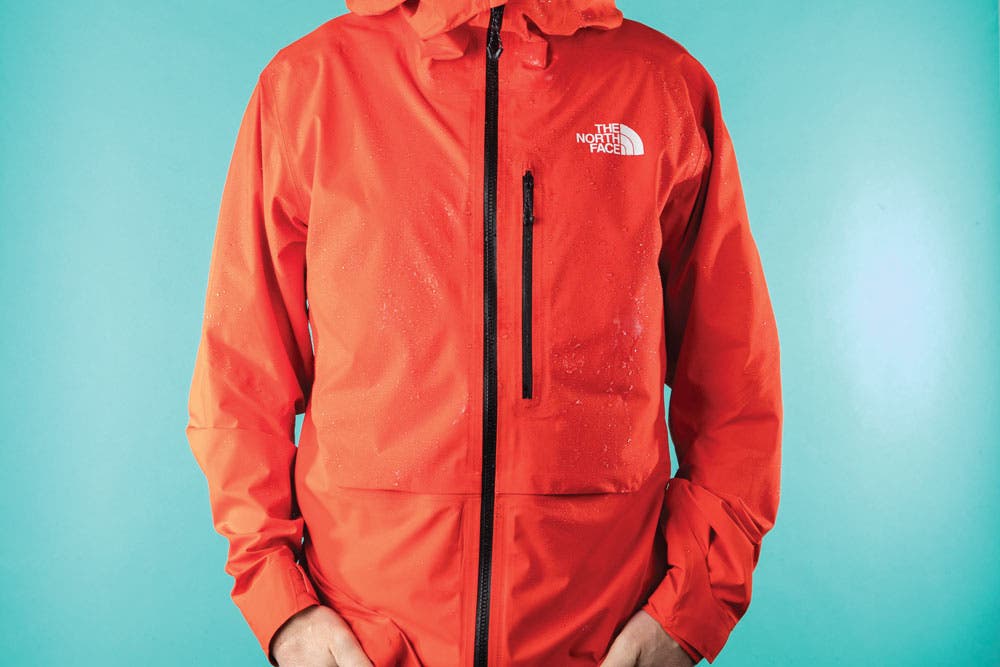What’s Great (and What’s Less Great) about The North Face FUTURELIGHT

John Collinson climbs Mount Victoria during a ski mountaineering trip at Banff National Park in Alberta, Canada. (Photo: Christian Pondella/Red Bull Content Pool )
More "What's Great (and What's Less Great)" Articles on Outside+
At SKI, there’s plenty of gear we love. But there’s also stuff that makes us want to update our status to “it’s complicated.” This gear is covered in our “What’s Great (And What’s Less Great)” series, available to Outside+ members. This one is free for everyone so you can get a taste of what we’re offering, but join Outside+ today to get the scoop on gear we’ve already had “the talk” with.
Arguably the most disruptive thing to happen to outerwear over the past few years, The North Face’s FUTURELIGHT fabric has since found its way into just about everything that the company makes.
After a few seasons of testing it, there are plenty of great things to talk about, but there’s one thing that still really bugs us.
What’s Great About The North Face FUTURELIGHT

Since the fabric was initially launched in 2019, The North Face Brigandine jacket and bibs with FUTURELIGHT have been go-to staples in my house for winter resort and backcountry skiing throughout Colorado and beyond. Additionally, the Summit L5 FUTURELIGHT LT jacket is, in my opinion, the near-perfect jacket for spring and summer backcountry skiing.
As one might expect from The North Face, both the Brigandine and the Summit L5 jackets have perfect cuts for modern skiing style. They are not too baggy, but still provide generous cover through the sleeves and the tail. Pockets are perfectly positioned to hold all the essentials and then some. Plus, as my favorite ski partner likes to remind me, the women’s Brigandine bibs are among the best ski bibs available for those moments when nature calls on the hill.
The breathability of both items is also among the top-of-the-class as well. For the Brigandine, the jacket stays on during cold and snowy tours without letting sweat build up. The Summit L5 achieves the incredibly difficult task of being able to stay on all day when it’s hot, cold, and everything in between.
Related: How The North Face’s FUTURELIGHT is Changing The Game
What’s Less Great about The North Face FUTURELIGHT

While the FUTURELIGHT jacket and bibs are undoubtedly waterproof, the face fabric fails to bead water droplets after a few good storms. Instead, these droplets get absorbed into the fabric, adding a bit of weight and color distortion.
While this might not seem like a big deal in the dry snow of the Wasatch and the Rockies, places with wetter winters and greater temperature swings might notice the water absorbed into the face fabric freezing up and adding stiffness to the cloth. The water does not get through the FUTURELIGHT membrane, so the person wearing the jacket doesn’t get wet, but it’s still just annoying.
This is common for other nanospun fabrics, including Polartec’s NeoShell, and is most likely caused by the PFC-free DWR that The North Face uses for its materials. While it isn’t as effective as a lot of the DWR of the past, the new DWR is not a terrible pollutant and is better for the environment. The trade off is that it just doesn’t perform as well.
Read About When the NeoShell Failed While Testing Men’s Backcountry Outerwear
Until The North Face figures out this DWR dilemma, this is the one factor that keeps the material just shy of perfect. But because this is a problem for a number of brands, hopefully the competition will drive the innovation needed to solve the industry’s weak DWR problem.
Join Outside+ to Read More “What’s Great (and What’s Less Great)” Columns
What’s Great (and What’s Less Great) about the Black Crows Corvus
The Corvus (and the Corvus Birdie for women) could be a great one-ski quiver option for some skiers out West. With a 107mm waist, no camber underfoot, poplar wood core sandwiched between two sheets of Titanal, and a 21-meter turn radius, the Corvus looks like a fun, burly freeride ski. But it hasn’t always agreed with the SKI Test crew. Read More…
What’s Great (And What’s Less Great) About the Blizzard Black Pearl 88
It has won SKI Test Gold countless times since its introduction in 2013, and to this day still flies off the shop shelves. In fact, I challenge you to try to keep count of how many purple/blue tails you spot in resort lift lines. So here’s what bugs me: Keep reading to find out…
What’s Great (and What’s Less Great) About Dragon’s Ultra Sunglasses
Every time I put them on, I am stoked about just how big the lenses are and how well they work. The sunglasses’ square shape does a great job of keeping my eyes shaded, and Dragon’s Lumalens technology blocks 100-percent of UV light and reduces glare well enough that I will probably fly fish with them this summer. But there’s this one thing… (Find out here)
What’s Great (and What’s Less Great) About the Salomon Stance Skis
Last year, Salomon somewhat quietly introduced the Stance family of skis as all-mountain options that are very much worthy of consideration for strong all-mountain skiers in North America. In fact, they should have announced it louder to fill a gap in their line. What gap? Check it out.